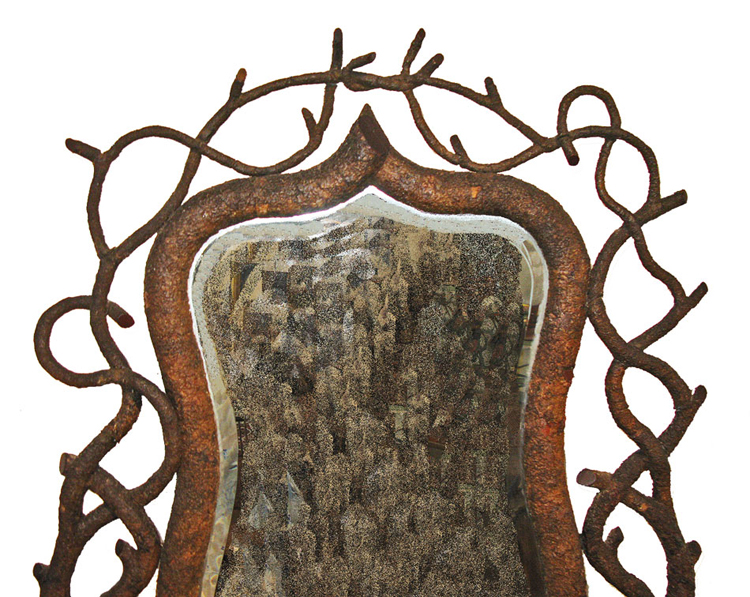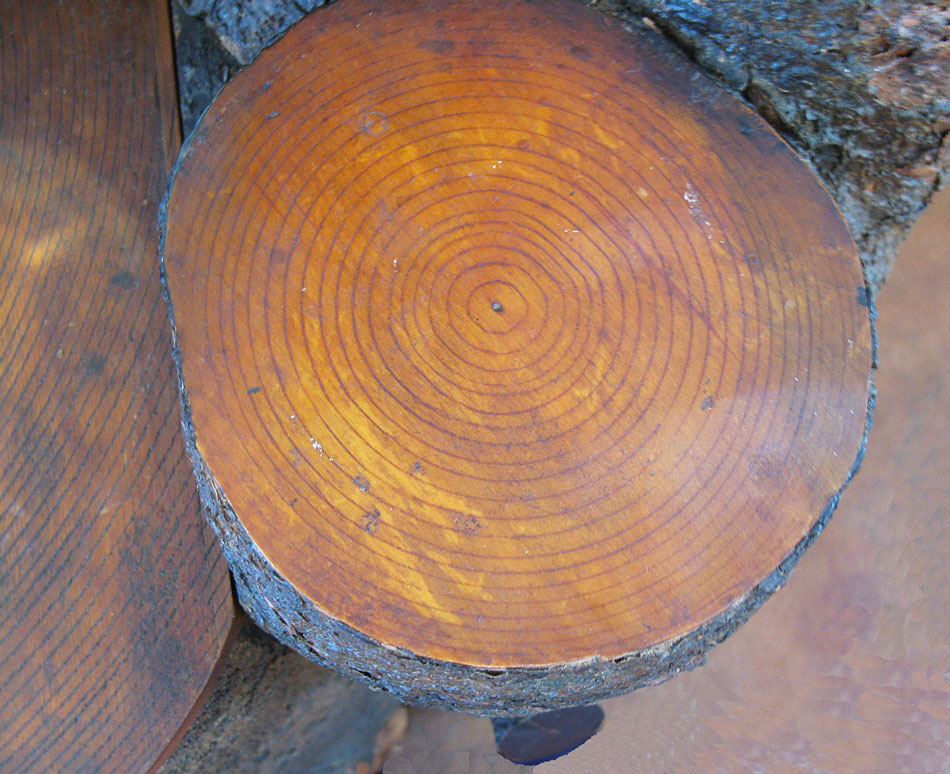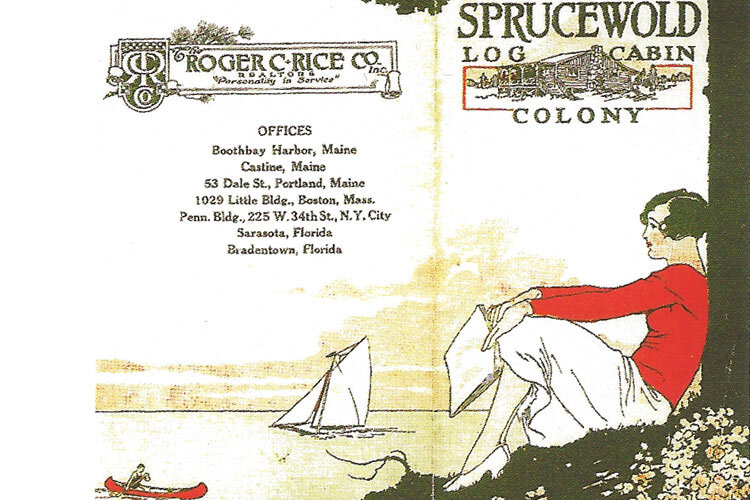A Rustic Masterpiece
Although we have seen some spectacular antique rustic case pieces over the years, including those in the permanent collection of the Adirondack Museum, we can assuredly say that this cabinet stands in a class of its own. It is one of the most creatively conceived and constructed pieces of furniture that we’ve had the pleasure of handling during our career as antiques dealers.
Its stature is impressive yet not overwhelming, standing at 7' 4" high. The style is quintessentially rustic in that it echoes a form found in nature, namely an unearthed tree. The base represents a massive trunk fringed with jagged roots,
and the beveled mirror surround represents intertwined branches.
Amazingly, its tree-like character was achieved without the use of natural branches, twigs, burls or roots. Its arboreal likeness was created entirely with carved and shaped wood components that are covered with thousands of pieces of applied natural bark.
The pine disks that top the branch-like portions of the base are painted with simulated tree rings, furthering the tree illusion.
The base is raised on hidden casters, so there are no legs to detract from its appearance as a tree whose roots extend toward the ground. The casters also make the cabinet extremely easy to move across a floor, so they are a design attribute that accomplishes functional as well as aesthetic goals.
Another appealing feature of the cabinet's design is that it can be placed in a corner or flat against a wall. The back of the case is angled to nestle against two walls of a room corner, thus occupying minimal floor space. Yet when placed against a flat wall, it also fits flush because the rounded front completely hides the back's angles.
The creator of this piece was clearly a skilled cabinet maker. The interior structure of the base is constructed like other high-quality antique case pieces. There are three drawers that open smoothly,
two side cabinets with shelves and doors,
and desk-like cubbies cleverly hidden behind a forward-sliding top.
Another inventive feature is that there are automatic locking mechanisms for the drawers and doors that are released with levers that are hidden within the woodwork.
The hidden locks suggest that this piece was made to use as a sideboard or cabinet for storing liquor, silver, and other valuables in a dining room or great room. While mirrors were a common feature of sideboards made in the late 19th and early 20th centuries, they were of course also often attached to bedroom dressers, so it is hard to say for sure how or where this particular case piece was used.
There are only two things we know for certain about its history. The first is the date it was made - 1914 - which is engraved beneath the mirror.
The second is that it was made in America, given the species of wood used in its construction. There are relatively few known early 20th-century rustic case pieces, and we have never seen a vernacular style quite like this, so its maker and exact region of origin remain unknowns that we hope to illuminate with further research.
What we do know unequivocally, is that this unique piece of rustic furniture was made by someone who was an artistic and ingenious designer, as well as an excellent woodworker. We are privileged to have owned it briefly, and are content in knowing that it will be cherished in its new home for many years to come.




























